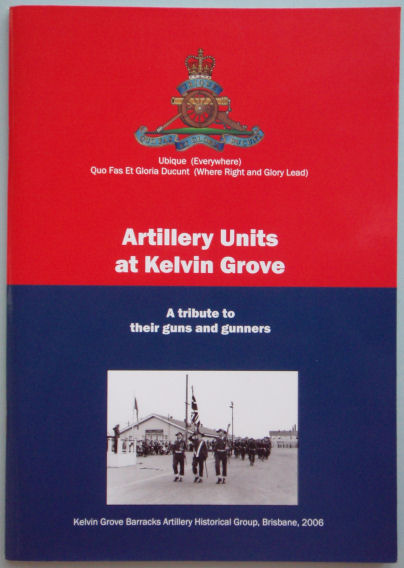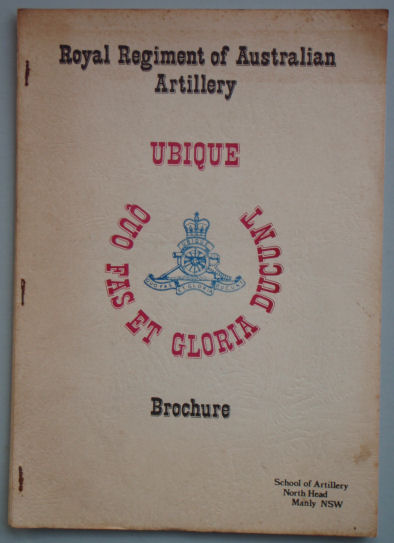Description
Title: 105th Field Battery Royal Regiment of Australian Artillery – a concise history.
Author: Burke, Arthur
Condition: Mint
Edition: 1st Edition
Publication Date: 2005
ISBN: 0975038915
Cover: Soft Cover without Dust Jacket – 48 pages
Comments: The history of the 105th Field Battery, Royal Australian Artillery.
The 105th Field Battery formed in 1955. It was the first artillery battery to leave Australia for active service in Vietnam and the first to return there for a second twelve-month tour of duty.
Commanded by Major Peter Tedder, the battery arrived in Vietnam in September 1965. At the time it was equipped with the Italian-made L5 pack howitzer, which turned out to be an effective weapon in Vietnam because it could be lifted by an Iroquois helicopter. On 23 October 1965 the battery participated in its first operational helicopter deployment when it was transported to Ben Cat, 50 kilometres north-west of Saigon.
In January 1966 the battery helped support the 1st Battalion, Royal Australian Regiment (1RAR), in the heavy fighting that occurred in the Ho Bo Woods area during Operation Crimp. Eight Australians lost their lives in Operation Crimp, including the 105th Battery’s forward observer Captain Ken Bade, the first Australian Officer to die in the Vietnam conflict.
Until May 1966, when the Australian Task Force (ATF) was established at Nui Dat, the battery also worked in close cooperation with various American units. On 16 March 1966 the 105th Field Battery and two American batteries fired for four hours in support of an American infantry battalion being vigorously attacked by two Viet Cong battalions. After the action, the American infantry commander sent Major Tedder a message saying, “Thanks for saving our lives. I have never seen finer shooting.”
In May 1966 the 105th Field Battery joined the ATF at Nui Dat. The battery initially operated with 5RAR but from August 1966 it assumed a general support role for the whole ATF. This role included both defensive fire (DF), and harassing and interdiction (HI) tasks.
On 17 August 1966 the 105th Field Battery took part in the battle of Long Tan, providing continuous fire support in rain and gathering darkness for the hard-pressed infantrymen of D Company, 6RAR. The heavy rain that fell throughout the battle prevented the dispersal of the cordite-filled smoke around the guns, resulting in the battery gunners having to cope with nausea, respiratory difficulties, and fainting fits while maintaining the bombardment.
On its first tour of Vietnam the 105th Field Battery also received attention as a result of the “O’Neill affair”. In February 1966 Gunner Peter O’Neill failed to appear on a field punishment parade arising from a charge of disobeying a lawful command. Major Tedder ordered O’Neill to be handcuffed to a star picket during the day and to a stretcher at night. The story appeared in the Australian media and caused questions to be asked in parliament.
Operation Vaucluse in early September 1966 and a brief move to French Fort marked the end of the 105th’s first tour of duty, with the main body of the unit flying out of Vietnam on 24 September. The battery had fired approximately 30,000 rounds during its tour.
On 4 February 1969 the 105th Field Battery, now commanded by Major L.A. “Lachie” Thomson, arrived at Nui Dat to begin its second tour of Vietnam. That day the battery’s advance party, assisted by scratch crews made up of passers-by, opened fire on an enemy supply truck seen in the vicinity and destroyed the vehicle. On its second tour of duty the battery operated from 31 different fire support bases, usually in support of 5RAR.
During the battle of Binh Ba (6–7 june 1969) the 105th Field Battery supported 5RAR, Australian armoured units, and South Vietnamese troops against a battalion of North Vietnamese regulars and a local enemy guerrilla force. Forward observer Lieutenant Paul Stevens was with D Company, 5RAR, at the village of Binh Ba throughout the battle, with the battery itself firing from Nui Dat. On the evening of the battle, Nui Dat was attacked by enemy rockets but retaliatory fire by the 105th Field Battery forced the enemy to break off. Later that night the battery carried out harassing-and-interdiction fire around Binh Ba. During the battle the battery fired 2,000 rounds over a period of 48 hours.
As part of Operation Camden (29 July to 30 August) the 105th Field Battery deployed by helicopter to Fire Support Base (FSB) Polly, from where it took part in 40 separate actions protecting an American reconnaissance-in-force and land-clearing operation north of Nui Dat. As a result of the battery’s involvement in this operation forward observer Bombardier Gerry Dekker was awarded the Military Medal and forward observer Bombardier Ric Stingemore was Mentioned in Despatches.
During Operation Kings Cross (31 October 1969 to 12 December 1969) the battery was stationed north-west of Nui Dat in FSB Cape, from where it fired a record 6,300 rounds in 16 days. Operation Bondi (30 December 1969 to 26 January 1970) was the 105th Field Battery’s last operation in Vietnam.
Signed by Author
Includes the names of the Battery Commanders and Battery Sergeant Majors




